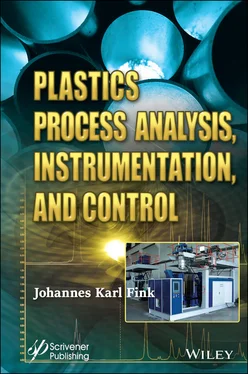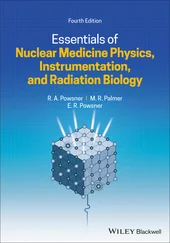Marine plastic debris floating on the ocean surface is a major environmental problem (66). However, its distribution in the ocean is poorly mapped out and most of the plastic waste estimated to have entered the ocean from land is unaccounted for.
A better understanding of how plastic debris is transported from coastal and marine sources is crucial to quantify and close the global inventory of marine plastics, which in turn represents critical information for mitigation or policy strategies. At the same time, plastic is a unique tracer that provides an opportunity to learn more about the physics and dynamics of our ocean across multiple scales, from the Ekman convergence in basin-scale gyres to individual waves in the surf zone (66).
The Ekman layer is the layer in a fluid where there is a force balance between pressure gradient force, Coriolis force and turbulent drag (67). It was first described by Vagn Walfrid Ekman (68). Ekman layers occur both in the atmosphere and in the ocean. There are two types of Ekman layers. The first type occurs at the surface of the ocean and is forced by surface winds, which act as a drag on the surface of the ocean. The second type occurs at the bottom of the atmosphere and ocean, where frictional forces are associated with flow over rough surfaces (67).
A review comprehensively discussed what is known about the different processes that govern the transport of floating marine plastic debris in both the open ocean and the coastal zones (66). The study was based on the published literature and refers to insights from neighboring fields such as oil spill dispersion, marine safety recovery, plankton connectivity, and other issues.
Floating debris may occur through events that are collected in Table 1.4.
Also discussed was how measurements of marine plastics (both in-situ and in the laboratory), remote sensing, and numerical simulations can elucidate these processes and their interactions across spatio-temporal scales (66).
Table 1.4 Floating debris (66).
| Reason |
References |
| Internal tides |
(70, 71) |
| Direct wind force |
(72, 73) |
| Langmuir circulation |
(74) |
| Vertical transport and mixing |
(75, 76) |
| Ice formation, melting and drift |
(77) |
| River plumes |
(78) |
| Surface waves and beaching |
(79) |
| Storms |
(80) |
| Tsunamis |
(81) |
| Transport by seabirds |
(82, 83) |
| Transport by plankton |
(84) |
1.15.2 Human Health Effects
Microplastics are ubiquitous environmental contaminants that lead to inevitable human exposure (69). The evidence for potential negative effects of microplastics in the human body has been reviewed. The study focuses on the pathways of exposure and toxicity.
Exposure may occur by ingestion, inhalation and dermal contact due to the presence of microplastics in products, foodstuff and air. In all biological systems, microplastic exposure may cause particle toxicity, with oxidative stress, inflammatory lesions and increased uptake or translocation. The inability of the immune system to remove synthetic particles may lead to chronic inflammation and increase risk of neoplasia. Furthermore, microplastics may release their constituents, adsorbed contaminants and pathogenic organisms. Nonetheless, knowledge of microplastic toxicity is still limited and largely influenced by exposure concentration, particle properties, adsorbed contaminants, tissues involved and individual susceptibility (69).
Recycling has been recognized as the preferred plastic waste management solution. However, little is known about the detailed characteristics of plastic waste and how these may affect its recycling (85).
In a study, hard plastic, plastic film and poly(vinyl chloride) (PVC) waste collected at three Danish recycling centers were sampled and characterized according to product applications, legislative requirements (quality), expected product lifetime, polymer types and presence of potential impurities such as colored plastics, non-plastic materials and multi-polymer products (85).
The so obtained information was used for the estimation of overall recycling potentials for selected archetype recycling process chains based on material flow analysis. In addition to providing detailed data for the composition of the plastic waste products, the results showed that impurities represented 28% (wet weight) of the plastic waste, and that about 75% of the plastic waste was characterized as low-quality applications, indicating some legislative recovery restrictions. By accounting for the level/type of impurities, the overall recycling potential was found to be 52% for hard plastics, 59% for plastic films and 79% for PVC waste.
The results of the study showed that while varying according to polymer type, the recyclability of high-quality plastic waste was 12% – 35% higher than low-quality applications. While actual results are representative of Danish conditions, the study demonstrated that detailed characteristics of plastic waste are needed to identify potential challenges to recycling, thereby potentially improving the design and the efficiency of recovery of recycling facilities (85).
In Europe’s Nordic region, there is low utilization of plastic waste and only a fraction of plastic materials goes back into production processes through reuse and recycling practices (86). In the main hotspots identified, these processes are in low demand due to price considerations, insufficient traceability and transparency in value chain transactions, and general design deficiencies in the recyclability of products.
1.15.3.1 Pollution Control
Plastics have been reported as one of the major pollutants among various pollutants that are disposed of in the environment (87). They play a pivotal part in human life as they are cost-effective and versatile.
Plastics are known to contain a mixture of many chemical components and are used for various domestic applications. Despite various useful applications, plastics take a long time to degrade.
The burning of plastics releases chemicals, such as phosgene and dioxides, that are considered a hazard to the ecosystem. The toxic debris that is released from the plastics can enter the food chain and water bodies in the form of microplastics.
Microplastic-polluted foods and the presence of meager amounts of phthalates in toys lead to serious health consequences such as congenital diseases and malignant cancers. The dioxins released from the plastic polymers are lethally persistent organic pollutants which cause tumor and neurological damage in humans.
Inadequate waste management practices have led to significant plastic pollution of water bodies (87). Plastics tend to settle on beaches, which decreases esthetic and recreation values. This article discusses methods for resource recovery from plastic wastes and the possible effects of plastics on the environment and available safety regulations for the use of plastics.
The scientific literature about the remediation of plastics using various methods has been discussed, which can help to promote further improvement of the existing system by competent authorities and researchers (87).
Growing environmental concerns associated with the accumulation of plastic waste in the natural environment have incentivized considerable research into renewable alternatives, and more recently, alternative waste management strategies (88).
To mitigate growing environmental concerns, while simultaneously facilitating an increase in plastic demand, it is imperative that the polymer industry evolves, shifting its focus from single-use and disposable plastics to a model focused on recapturing product value and reducing waste, namely the circular economy (89–91).
Читать дальше












